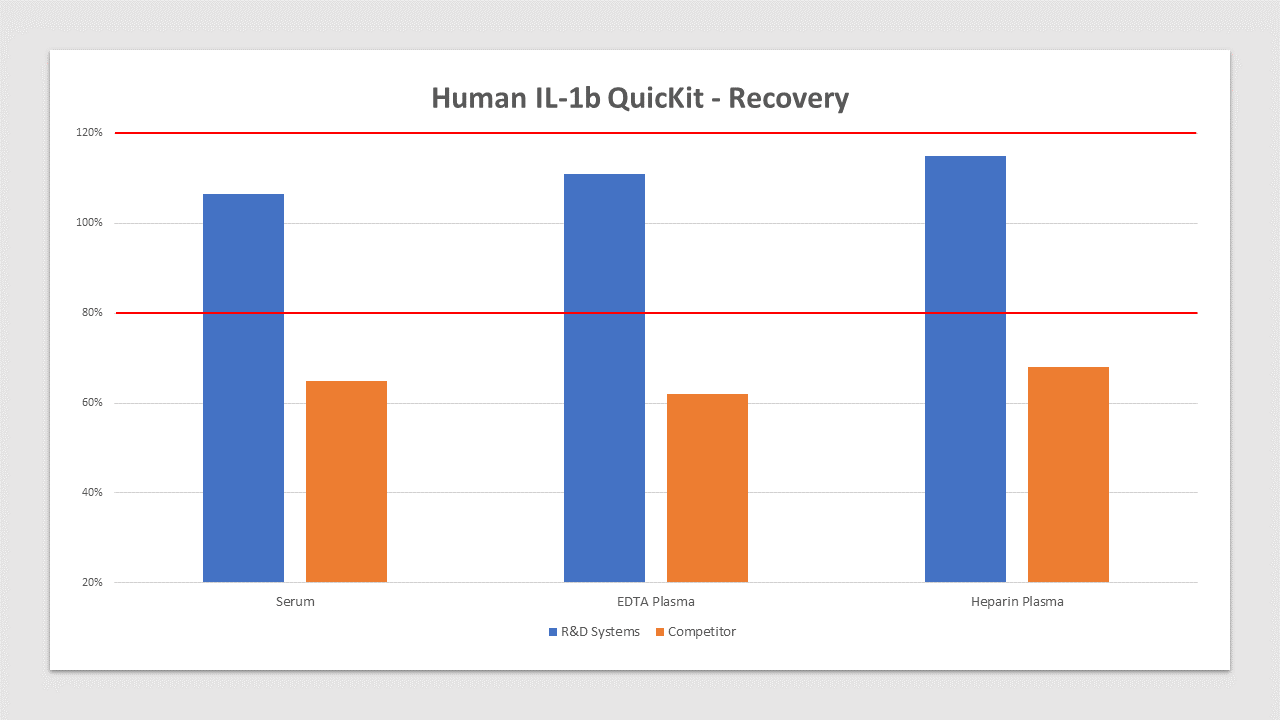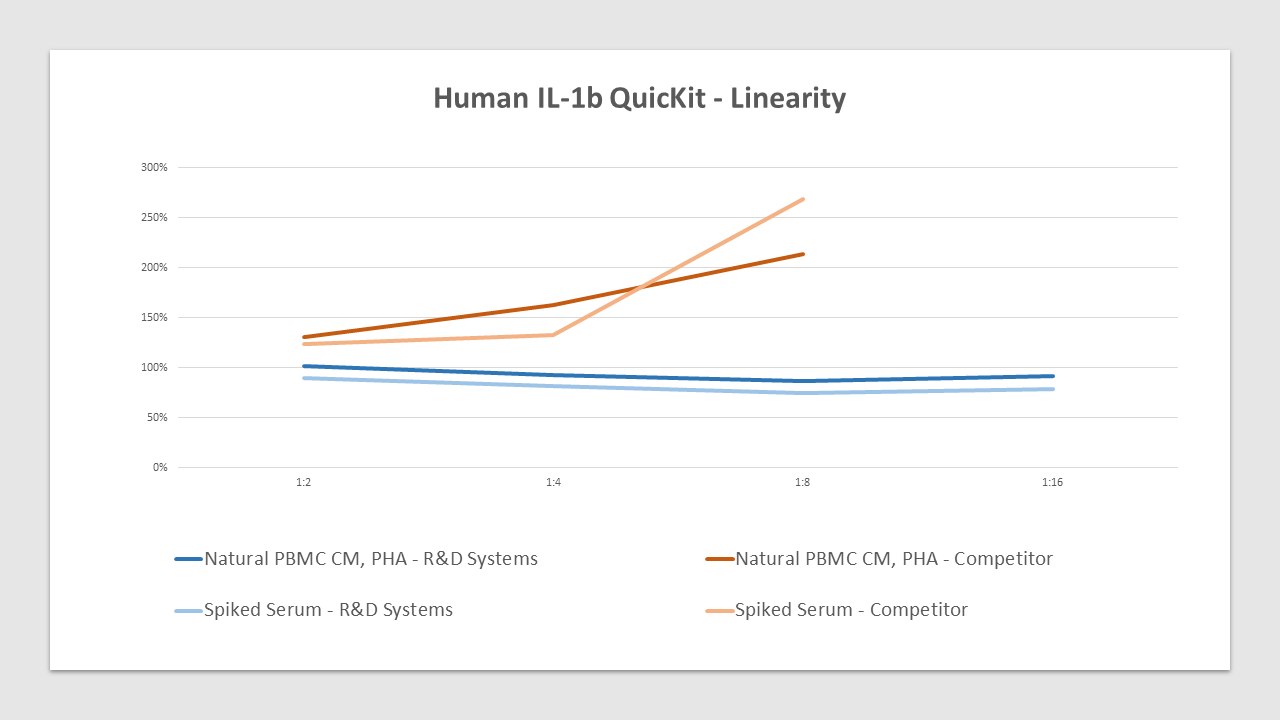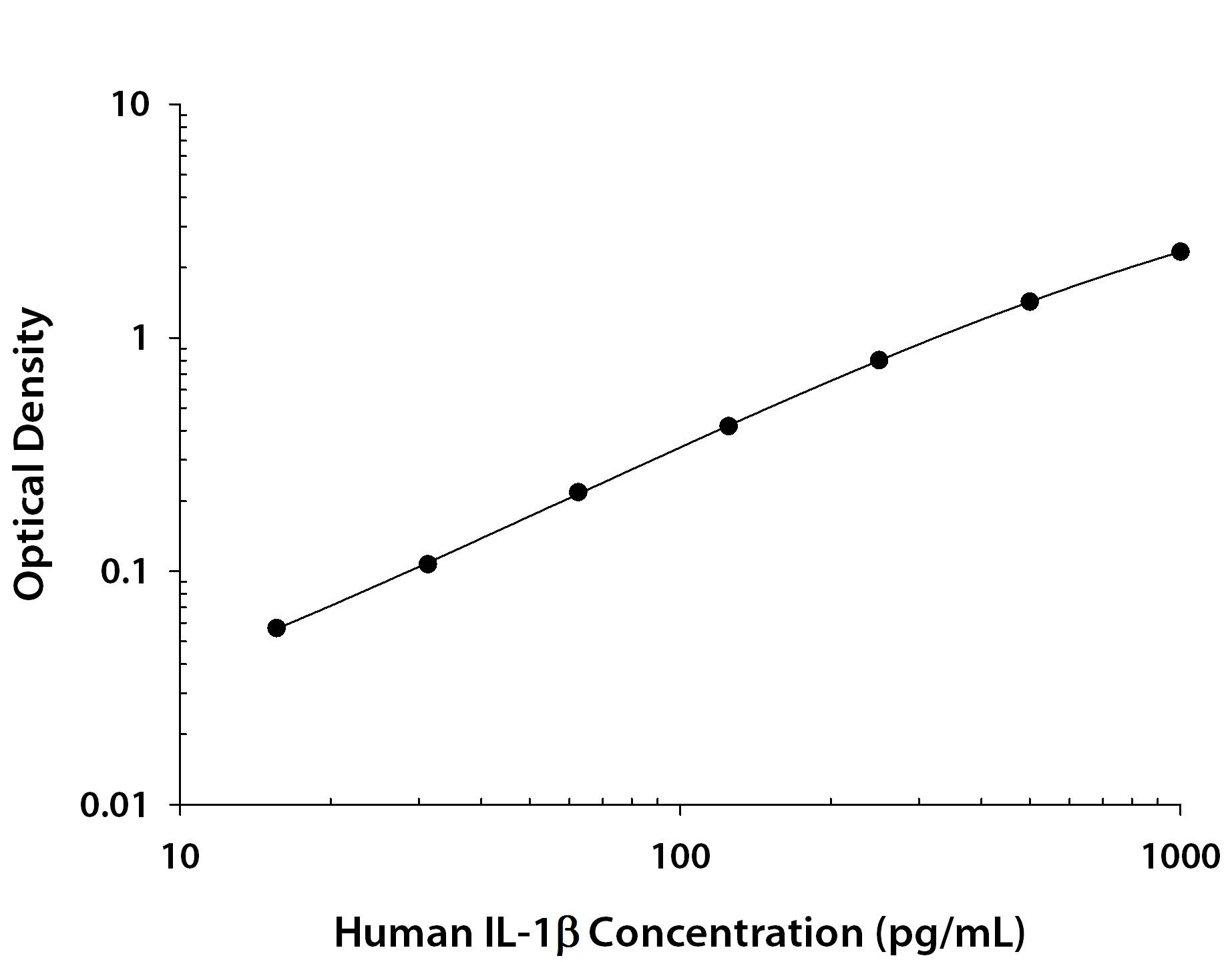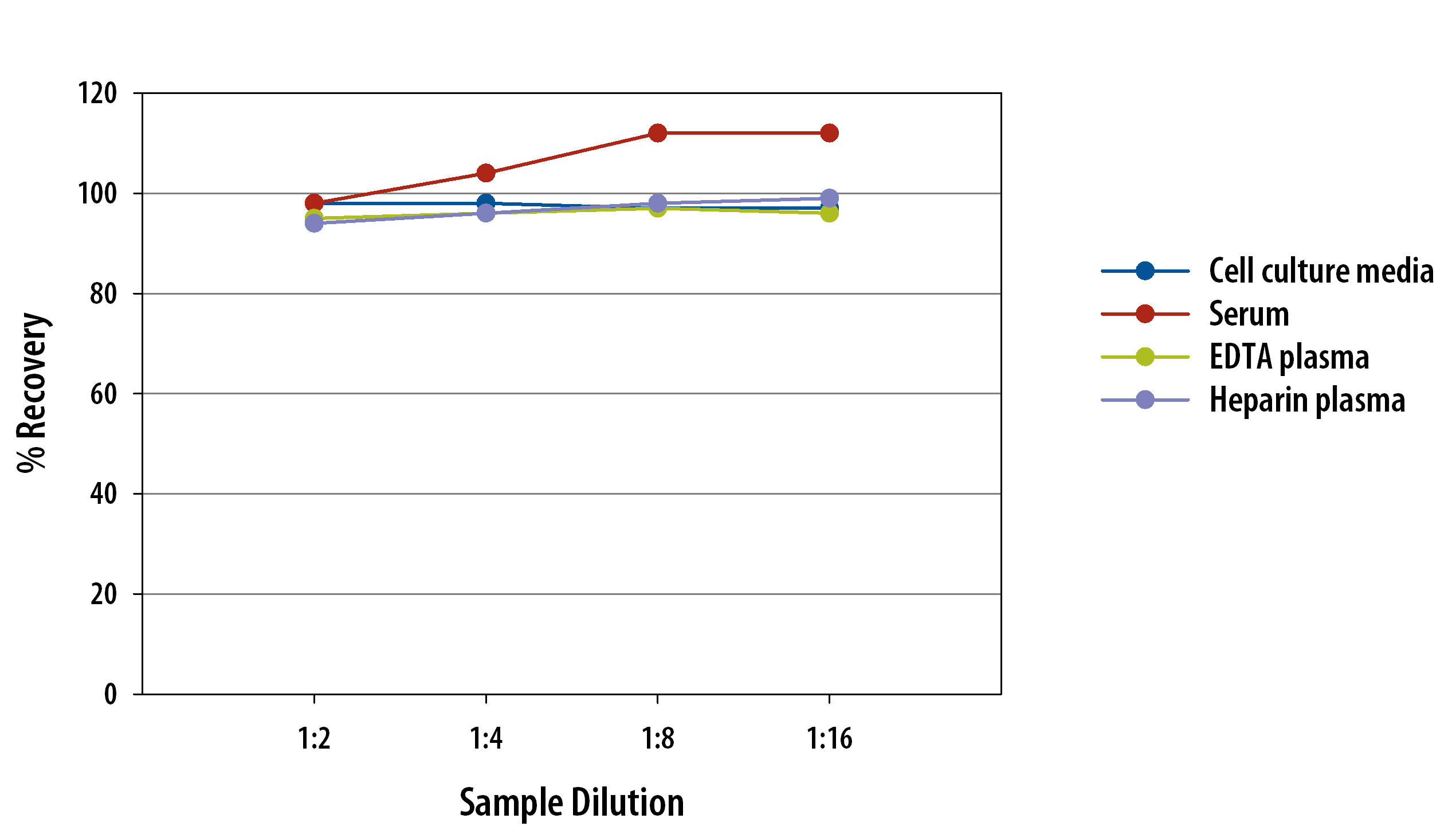Human IL-1 beta/IL-1F2 QuicKit ELISA Summary
Product Summary
Precision
Cell Culture Supernates, Serum, EDTA Plasma, Heparin Plasma
| Intra-Assay Precision | Inter-Assay Precision | |||
|---|---|---|---|---|
| Sample | 1 | 2 | 1 | 2 |
| n | 20 | 20 | 10 | 10 |
| Mean (pg/mL) | 102 | 526 | 103 | 528 |
| Standard Deviation | 1.93 | 7.77 | 4.22 | 16.4 |
| CV% | 1.9 | 1.5 | 4.1 | 3.1 |
Recovery
| Sample Type | Average % Recovery | Range % |
|---|---|---|
| Cell Culture Media (n=4) | 105 | 99-108 |
| EDTA Plasma (n=2) | 110 | 106-118 |
| Heparin Plasma (n=2) | 105 | 99-113 |
| Serum (n=2) | 98 | 94-104 |
Linearity
Scientific Data
 View Larger
View Larger
Human IL-1b QuicKit Spiked Recovery Competitor Comparison IL-1b is spiked at three known concentrations throughout the range of the assay and run to measure response of the spiked sample matrix. Serum recovery is 107% compared to 65% for the top competitor. EDTA plasma recovery is 111% compared to 62% for the top competitor. Heparin plasma recovery is 115% compared to 68% for the top competitor. In spike and recovery experiments, natural samples are spiked with the recombinant target analyte of interest to identify interference caused by sample matrices.
 View Larger
View Larger
Human IL-1b QuicKit Linearity Competitor Comparison Samples containing and/or spiked with high concentrations of Leptin in various matrices and diluted with appropriate Calibrator Diluent to produce samples with values within the dynamic range of the assay. The linearity is between 75%-102% compared to 124%-269% for the top competitor.
Product Datasheets
Preparation and Storage
Background: IL-1 beta/IL-1F2
The Interleukin 1 (IL-1) family of proteins consists of the classic members IL-1 alpha, IL-1 beta, and IL-1ra, plus IL-18, IL-33 and IL-1F5-F10. IL-1 alpha and IL-1 beta bind to the same cell surface receptors and share biological functions (1). IL-1 is not produced by unstimulated cells of healthy individuals with the exception of skin keratinocytes, some epithelial cells, and certain cells of the central nervous system. However, in response to inflammatory agents, infections, or microbial endotoxins, a dramatic increase in the production of IL-1 by macrophages and various other cell types is observed. IL-1 beta plays a central role in immune and inflammatory responses, bone remodeling, fever, carbohydrate metabolism, and GH/IGF-I physiology. Inappropriate or prolonged production of IL-1 has been implicated in a variety of pathological conditions including sepsis, rheumatoid arthritis, inflammatory bowel disease, acute and chronic myelogenous leukemia, insulindependent diabetes mellitus, atherosclerosis, neuronal injury, and aging-related diseases (2-5).
Citation for Human IL-1 beta/IL-1F2 QuicKit ELISA
R&D Systems personnel manually curate a database that contains references using R&D Systems products. The data collected includes not only links to publications in PubMed, but also provides information about sample types, species, and experimental conditions.
1 Citation: Showing 1 - 1
-
LINC01094/SPI1/CCL7 Axis Promotes Macrophage Accumulation in Lung Adenocarcinoma and Tumor Cell Dissemination
Authors: Z Wu, X Bai, Z Lu, S Liu, H Jiang
Journal of Immunology Research, 2022-09-09;2022(0):6450721.
Species: Human
Sample Types: Cell Culture Supernates
FAQs
No product specific FAQs exist for this product, however you may
View all ELISA FAQsReviews for Human IL-1 beta/IL-1F2 QuicKit ELISA
There are currently no reviews for this product. Be the first to review Human IL-1 beta/IL-1F2 QuicKit ELISA and earn rewards!
Have you used Human IL-1 beta/IL-1F2 QuicKit ELISA?
Submit a review and receive an Amazon gift card.
$25/€18/£15/$25CAN/¥75 Yuan/¥2500 Yen for a review with an image
$10/€7/£6/$10 CAD/¥70 Yuan/¥1110 Yen for a review without an image













